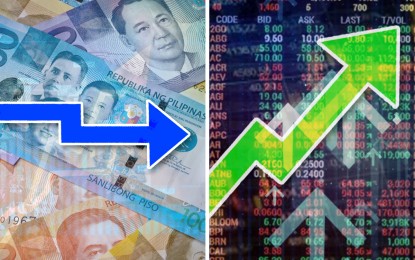
MANILA – The local stock barometer ended the new year’s first trading day higher, mirroring counterparts in the US, while the peso remained firm against the greenback.
The Philippine Stock Exchange index (PSEi) gained by 0.81 percent, or 57.79 points, to 7,197.50 points.
All Shares followed with a jump of 1.04 percent, or 44.55 points, to 4,317.16 points.
Mining and Oil led the sectoral indexes in tracking the main index after it rose by 3.85 percent.
It was trailed by Property that inched up by 2.02 percent; Services, 1.33 percent; Industrial, 0.78 percent; and Holding Firms, 0.62 percent.
Only the Financials index ended the day in the red after it fell 0.53 percent.
Volume totaled 21.55 billion shares amounting to PHP10.03 billion.
Advancers led decliners at 124 to 121, while 36 shares were unchanged.
“Local shares kicked off the year on a positive note, as investors made bets ahead of the vaccine rollout and the recovery of the Philippine economy,” Luis Limlingan, Regina Capital Development Corporation head of sales, said.
He said the local bourse benefited from the positive sentiments in the US, which ended 2020 on record highs, with the Dow Jones rising by 196.92 points to 30,606.48 and the S&P 500 gaining 24.03 points to 3,756.07 points.
The peso also kept its footing after ending Monday’s trade at 48.02 to a greenback from 48.023 on the last trading day of 2020 or last Dec. 29.
It opened the day at 48.02, sideways from its 48.04 start in the previous session.
It traded between 48.035 and 48.015, resulting in an average of 48.022.
Volume totaled USD873.75 million, higher than last Friday’s USD731.25 million.
In a reply to e-mailed questions from PNA, Rizal Commercial Banking Corporation (RCBC) chief economist Michael Ricafort said the local unit continued to end the trade at its highest for over four years.
The peso finished the trade at 47.99 to a US dollar on Sept. 23, 2016, partly on softer manufacturing data, with the purchasing managers’ index (PMI) data for December sliding to 49.2 from 49.9 in the previous month, he said.
An index below 50 indicates contraction while those above 50 show expansion.
This latest report, Ricafort said, “would lead to some softness in imports data that would reduce the demand for US dollars to pay for imports amid continued GCQ (general community quarantine) in Metro Manila since June 2020.”
He said, “the new coronavirus variant could lead to slower economic recovery globally and locally, as well as slower pick up in imports, thereby could still support a relatively stronger peso.”
“Peso (was) also slightly stronger a day before the latest inflation data, which could ease after the transitory effects of storm damage by Typhoons Ulysses and Rolly, but offset by Tropical Depression Vicky,” he added.
The government is scheduled to report the December 2020 inflation data on Tuesday.
The rate of price increases last November posted its highest since February 2019’s 3.8 percent when it rose to 3.3 percent from month-ago’s 2.5 percent.
For Tuesday, the peso is seen to trade between 47.99-48.05 to a US dollar. (PNA)
